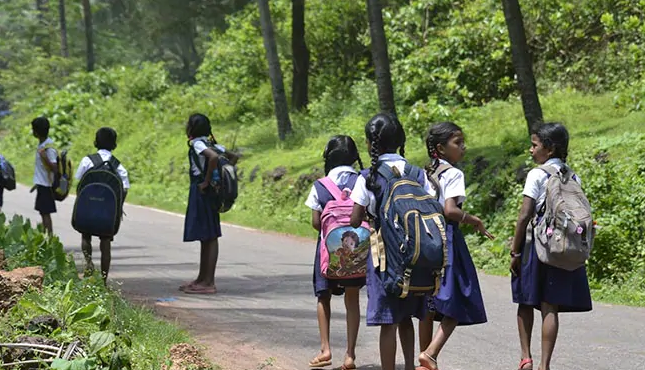1 In 3 Adolescent Girls From The Poorest Households Has Never Been To School: UNICEF
The paper asked the governments to distribute the funds within domestic resources allocation, so that children from the poorest 20 per cent of households benefit from at least 20 per cent of education funding.

Credits : www.ndtv.com
New Delhi: Nearly 1 in 3 adolescent girls (aged 10-19 years-old ) from the poorest households around the world has never been to school, according to a new UNICEF paper launched today as education ministers gather at the Education World Forum and as leaders prepare to convene at the World Economic Forum annual meeting.
Poverty, discrimination due to gender, disability, ethnic origin or language of instruction, physical distance from schools and poor infrastructure are among the obstacles that continue to prevent the poorest children from accessing quality education, according to a statement from the UNICEF.
Exclusion at every step of education perpetuates poverty and is a key driver of a global learning crisis, it added.
"Countries everywhere are failing the world's poorest children, and in doing so, failing themselves," said UNICEF Executive Director Henrietta Fore.
"As long as public education spending is disproportionately skewed towards children from the richest households, the poorest will have little hope of escaping poverty, learning the skills they need to compete and succeed in today's world, and contributing to their countries' economies," she added.
Looking at 42 countries with available data, the paper finds that education for children from the richest 20 per cent of households are allocated nearly double the amount of education funding than children from the poorest 20 per cent of households.
Ten countries across Africa account for the highest disparities in education spending, with four times as much funding allocated to the richest children compared with the poorest.
Barbados, Denmark, Ireland, Norway and Sweden are the only countries included in the analysis that distribute education funding equally between the richest and poorest quintiles.
The paper notes that the lack of resources available for the poorest children is exacerbating a crippling learning crisis, as schools fail to provide quality education for their students.
According to the World Bank, more than half of children living in low- and middle-income countries cannot read or understand a simple story by the end of primary school.
The paper asked the governments to distribute the funds within domestic resources allocation, so that children from the poorest 20 per cent of households benefit from at least 20 per cent of education funding.
It also asked the government to prioritise public funding for lower levels of education - where the children from the poorest households are most represented - and gradually increase allocations to higher levels when coverage is close to universal at lower levels.
"We are at a critical juncture. If we invest wisely and equitably in children's education, we have the best possible chance of lifting children out of poverty by empowering them with the skills they need to access opportunities, and create new ones for themselves," said Ms Fore.
Back to All Educational News
Share This:
Source: www.ndtv.com
